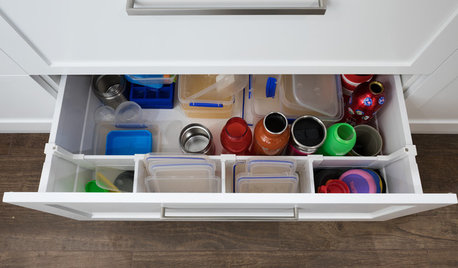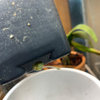Burrito cuttings - the Advanced Burrito Modification.
It is really nice that new ideas are being developed. The Burrito method for cuttings is a really nice idea: it uses principles of etiolation (darkness) and high humidity to induce rooting in a semi-ripe stem. However, some people are getting failures, and this has led to disappointment and abandonment of the method.
In order to keep the ball rolling, and avoid going backwards, I have been doing some studying and sticking of cuttings. I use peat pots with peat based medium / sand covered with a plastic dome, which is easy for the home amateur gardener. I have experience with the Austin "Mary Rose", which roots quite easily for me. This year I have decided on Hansa, due to the total cast iron resistance to extreme cold (zone 3). My first set of cuttings in June (conventional cuttings) were stuck in Pro-Mix (peat/perlite/vermiculite) mixed with sand. These failed, due to damping off. I pulled out the failed cuttings and used the exact same used pot and medium, but this time poured straight laundry bleach into the medium, then washed it out five times with my garden wand. I let the peat pots drain overnight, and then I stuck another set of cuttings, and this time they rooted! Within 10 days there was callus, and in two weeks tiny roots. I noticed the root is at the middle of the cutting, and not the base, which tells me the base was still too wet, and I need more air in the medium. My readings found out that air is essential and sometimes straight perlite works best for some plants, and peat does not, and also some people say that with too damp it never roots, but slightly dry is never a problem. Also, some people are using ground up tree bark. So I bought a bag of perlite, and got some ground up tree bark (bark is quite cheap). I used 3 parts bark, one part regular perlite, another part medium perlite, one part Pro-Mix (mainly peat). I wetted this mix and added a bit of Southern Ag copper ammonium (1 tbsp per gallon). I did this because the British are using Cheshunt copper to keep off the damping off, so I figured why not.
Now for the cuttings part. The burrito is basically like totally burying the stem, and this is similar to a leaf-bud cutting, except the leaf-bud keeps a leaf. The online pictures show clearly the roots are forming at the node/bud area. So that means the burrito is just a leaf-bud without the leaf. Keeping this in mind, I decided to try the leaf-bud method for Hansa. I already know I can root it conventionally, and I know that it needs air to root, and I know that it can be killed with wet and with damping-off, so I used the bark/perlite/peat medium to provide lots of air, tiny bit of copper ammonium for insurance, and I stuck 4 dozen Hansa leaf-bud cuttings yesterday. I used green wood with a flower bud, or semi-ripe wood that had just flowered. I avoided anything that was too woody, and used those for conventional cuttings. So there was another one dozen of conventional cuttings using the more ripe semi-ripe. The less ripe semi-ripe was all stuck with leaf bud method.
I suggest a new name for this leaf-bud method, calling it the Advanced Burrito Modification, because 1. - people have not been doing leaf-bud with roses 2. - it has similar principles to the Burrito 3. - it does not require a transplantation step like the Burrito does, so I call it the "advanced" Burrito.
Cheers and I will report back in two weeks to see if there is any action down below.









donaldvancouver
overdriveOriginal Author
Related Professionals
Oatfield Landscape Architects & Landscape Designers · Rancho Palos Verdes Landscape Architects & Landscape Designers · Edmond Landscape Contractors · Hartford Landscape Contractors · Brandon Landscape Contractors · Canby Landscape Contractors · Cedar Hill Landscape Contractors · Lemoore Landscape Contractors · Pahrump Landscape Contractors · Southbury Landscape Contractors · Albuquerque Roofing & Gutters · Lexington Roofing & Gutters · Hillcrest Heights Roofing & Gutters · Westchester Roofing & Gutters · Colonia Roofing & Guttersstrawchicago z5
roseseek
klinko16
strawchicago z5
klinko16
roseseek
klinko16
overdriveOriginal Author
strawchicago z5
roseseek
donaldvancouver
roseseek
donaldvancouver
roseseek
strawchicago z5
roseseek